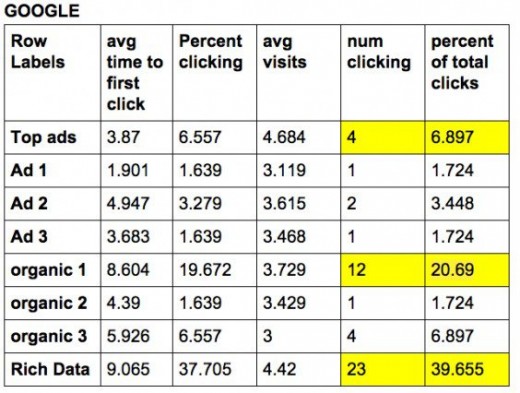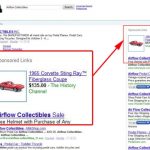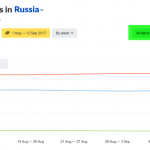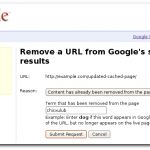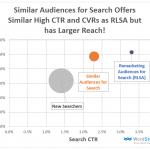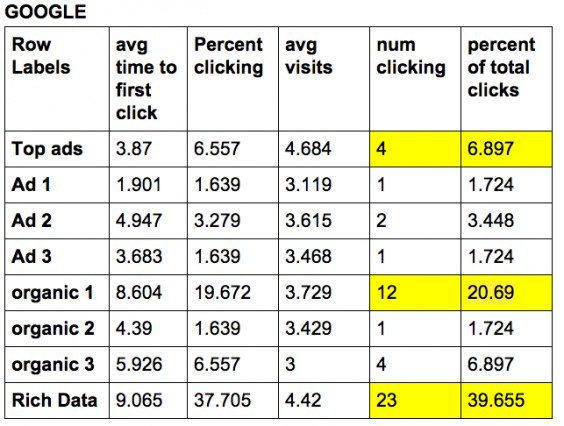F-Patterns No more: How people View Google & Bing Search outcomes
March four, 2016
How do people view search results? the reply to this questions brings nice perception to these seeking to generate income on search advertising, whether or not website positioning or PPC. We conducted a new eye tracking find out about to search out out.
There had been just a few eye-monitoring and mouse-tracking studies completed on search habits prior to now. after all, you’re most probably acquainted with the F-sample uncovered through NN/g years in the past.
however, search engines like google (search engine outcomes pages) are evolving speedy, and so is user conduct on the subject of search.
So, as a part of model new research arm – ConversionXL Institute – we carried out our personal eye monitoring find out about. We wanted to peer if earlier analysis still holds up.
The Ever-Evolving search engines like google
Google and Bing are continuously changing their interface. The goal, of course, is to offer the best imaginable user experience with probably the most related outcomes. If customers attain their intention sooner, and are satisfied with the content material the SERP gives you, they’re more prone to return and bring that candy ad income to the corporate.
Let’s take, as an instance, the proliferation of wealthy snippets, the extra content rather than the black textual content and link that decision your consideration to a outcomes. These are things like reviews, photos, cellphone numbers, and so on.
They’re regarded as extremely effective at calling consideration to a outcome and to supply a excellent user expertise, however recently Google has mentioned that they don’t wish to muddle results with too many wealthy snippets
As Zineb from Google posted on Twitter, “enfin, nous essayons de ne pas trop “encombrer” les search engines like google avec trop de web sites avec RS. Du coup, vos critères sont à évaluer.” (That translates to “eventually, we try to no longer “litter” the engines like google with too many websites with RS. unexpectedly, your criteria are to judge.”)
level is, things trade. So we checked out some prior studies to match to our results. here are a few things we’ll contact on in the article:
- How Do users View Google Search outcomes, Now vs Then?
- F-Patterns and Gutenberg Diagrams: Do They hold Up?
- How Do people View advertisements?
- Google vs Bing: vital variations?
How Did customers View Google Search outcomes previously?
In 2014, Mediative did an eye monitoring find out about on fifty three contributors who did forty three fashionable tasks. They compared the results with results they’d gotten from a identical 2005 learn about:
Writing concerning the find out about, MarketingProfs’ creator Nanji said, “the highest organic consequence still captures about the same amount of click job (32.8%) because it did in 2005. then again, with the addition of recent SERP components, the highest consequence is just not seen for as long, or through as many individuals. natural results that are put within the 2nd through 4th slots now receive a significantly greater share of clicks than in 2005.”
How does this evaluate to our results?
the top natural search outcome still receives, via a ways, the most clicks of any organic search consequence (20.sixty nine% of all clicks on Google). The closest to that’s, oddly sufficient, natural result #three, with 6.897% of clicks. on the other hand, wealthy data now gets 39.655% of clicks, by way of some distance the biggest share.

Rows are predefined ‘Areas Of pastime’ (AOIs) that person eye-tracking records are calculated on. AOIs may overlap, in this case percentage information must now not be summed throughout AOIs
while there was an important difference in what customers clicked on (1st vs third vs 2nd), there wasn’t so much of a difference, on Google or Bing, on how lengthy users fixated on each and every natural consequence:
Does The F-pattern still hang genuine?
internet optimizers and researchers are on a regular basis as a minimum slightly aware of Nielsen Norman staff’s F-pattern thought according to their 2006 study and article. the speculation that you can slap an uppercase letter onto a webpage to unravel all your design issues sounds just right, surely appears to be like good, and for a while it most probably used to be excellent.
We’re here to claim that the F-sample is no more. The evolution of search engine results pages has caused a equivalent evolution in user conduct patterns. The strict F-sample type we saw sooner than is, moderately frankly, out of date
here’s what the old F-pattern looks like:
With the appearance of wealthy textual content and advert placement, users in finding themselves exploring the entire results page to seek out what they’re on the lookout for. As we seen throughout the Google platform, many customers look at rich text on the best sooner than even taking into account actual search outcomes. unfortunately, there is no longer a letter within the (English) alphabet to explain this new sample:

that you may additionally see the F-sample from a 2009 Google study with 34 contributors:
however we merely didn’t see that in our data, even if we did the same process (we had 71 customers search for ‘spanish water dog’):

How Do individuals View advertisements
It’s authentic – advertisements positioned on the precise don’t get so much love.
Their position on the search results web page simply won’t allow for it, they’re in a bad part of city.

then again, in the case of advertisements cleverly designed to seem like prime search outcomes, customers can’t help but appear even if for simplest a moment. When the hoax is up, though, users speedy go away the paid search outcomes at the back of for natural ones. the very fact does remain that they’re taking a look at those paid outcomes, though, and in an instant.
in terms of how lengthy users spend having a look at advertisements, there’s no significant difference between proper sided ads and paid search consequence commercials.
One factor that popped out in the data is how rather more standard it was for customers to click prime ads on Bing. 19.118% of clicks had been to the highest advertisements on Bing, in comparison with simplest 6.897% on Google.
This all being stated, it’ll be attention-grabbing to look how Google’s resolution to prevent displaying right sided commercials will impact user behaviors.
Google Vs Bing: significant variations?
a few of our findings can affect how you approach percentand search engine marketing; some of it’s simply interesting, especially relating to the differences between Bing and Google. listed here are some things we discovered…
there’s a significant difference between how quickly users looked at wealthy text relying on whether or not Google or Bing used to be used.
users commenced to view and believe rich textual content significantly more quickly when the use of Google than Bing. (users checked out rich text after approximately .75 seconds whereas using Google. On Bing, it took them about 1.three seconds to view the rich text)
It took customers significantly longer to start exploring the search outcomes “beneath the fold” on Bing than on Google.
users on Google commenced to view search outcomes beneath the fold after around 7.1 seconds. When on the Bing search engine, customers didn’t get round to exploring results positioned beneath the fold until around 10.5 seconds.
users spent significantly more time viewing the quest outcomes web page “above the fold” when the use of Bing in comparison with Google.
On Bing, customers spent round 9.eight seconds having a look at information above the fold, while Google users most effective spent a standard of seven.eight seconds above the fold.
here’s Bing:

And Google:

similarly, customers spent significantly longer viewing the first 5 search outcomes when the use of Bing in comparison with Google.
customers on Bing spent a normal of 4.5 seconds specializing in the primary five search results. Google users simplest spent a standard of 3.four seconds making an allowance for the page’s first 5 results.
It took Bing customers significantly longer to view the first natural search result compared to Google customers.
Google users seen the first organic search consequence round three.three seconds into their search experience. It took Bing users roughly 8.8 seconds to begin making an allowance for the primary organic search consequence.
Why?
It appears not going that Bing users were merely exploring different elements of the web page first due to the fact that most Bing customers seemed on the search results sooner than any other part on the implications web page. Google users, who typically viewed wealthy text before the hunt results, still managed to beat Bing users to the first natural search end result through five seconds. most likely laptop users are less acquainted with Bing and need time to figure out what’s an ad and what’s now not.
users spent considerably longer taking a look on the first organic search result and significantly much less time looking on the first ad search outcome on Google in comparison with Bing.
Google users spent round .764 seconds taking into account the primary paid search consequence. Bing customers spent almost double that point (1.455 sec) taking into account the primary paid search consequence. Bing users spent round .7 seconds considering the primary organic search consequence while customers spent 1.059 seconds on the primary organic result on Google.
What does this mean?
this could imply that individuals who use Bing aren’t as familiar with it (compared to Google users), so they need to spend a little bit longer discriminating between paid and organic search outcomes. that is supported through the truth that Google customers accomplished duties virtually 2 seconds quicker than Bing:

also, and that is only a theory, however the gold advert icons Google uses make it in point of fact simple to breeze earlier and in finding natural outcomes. possibly individuals on Bing simply don’t notice the variation between advertisements and natural. that is supported by way of the fact that Bing users spend far more time above the fold and don’t make it below the fold as regularly:

Conclusion
On Bing, customers spend a major component of their time taking into account search results (in comparison to wealthy textual content and advertisements off on the best facet), especially the primary five search results.
As a well-recognized and hottest search engine, Google users feel relaxed exploring the whole thing of a search results web page as opposed to strongly focusing in on the primary parts they see. customers are comfortable viewing wealthy data and don’t hesitate to quick scroll down and believe outcomes located below the fold.
possibly, it’s the novelty of Bing as a search engine that requires customers to spend extra time exploring and digesting search outcomes.
The evolution of search engine result pages has surely modified person conduct. The strict F pattern fashion we saw ahead of is, rather frankly, no more. (as a minimum in the contexts we researched). With the appearance of rich textual content and ad placement, users in finding themselves exploring all the results web page to search out what they’re looking for. As we noticed via Google, many users take a look at wealthy textual content sooner than even making an allowance for the true search results.
Digital & Social Articles on trade 2 community
(43)

